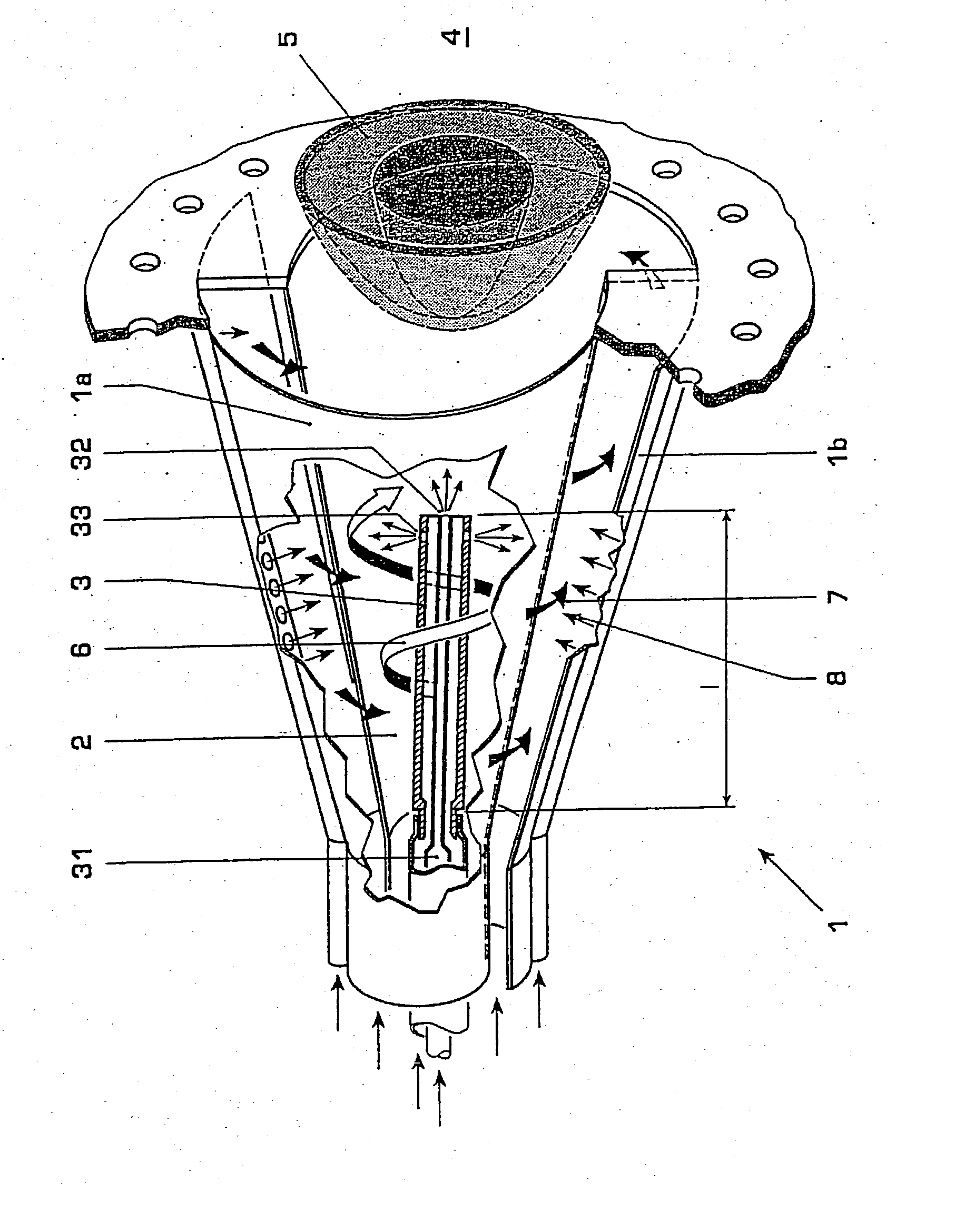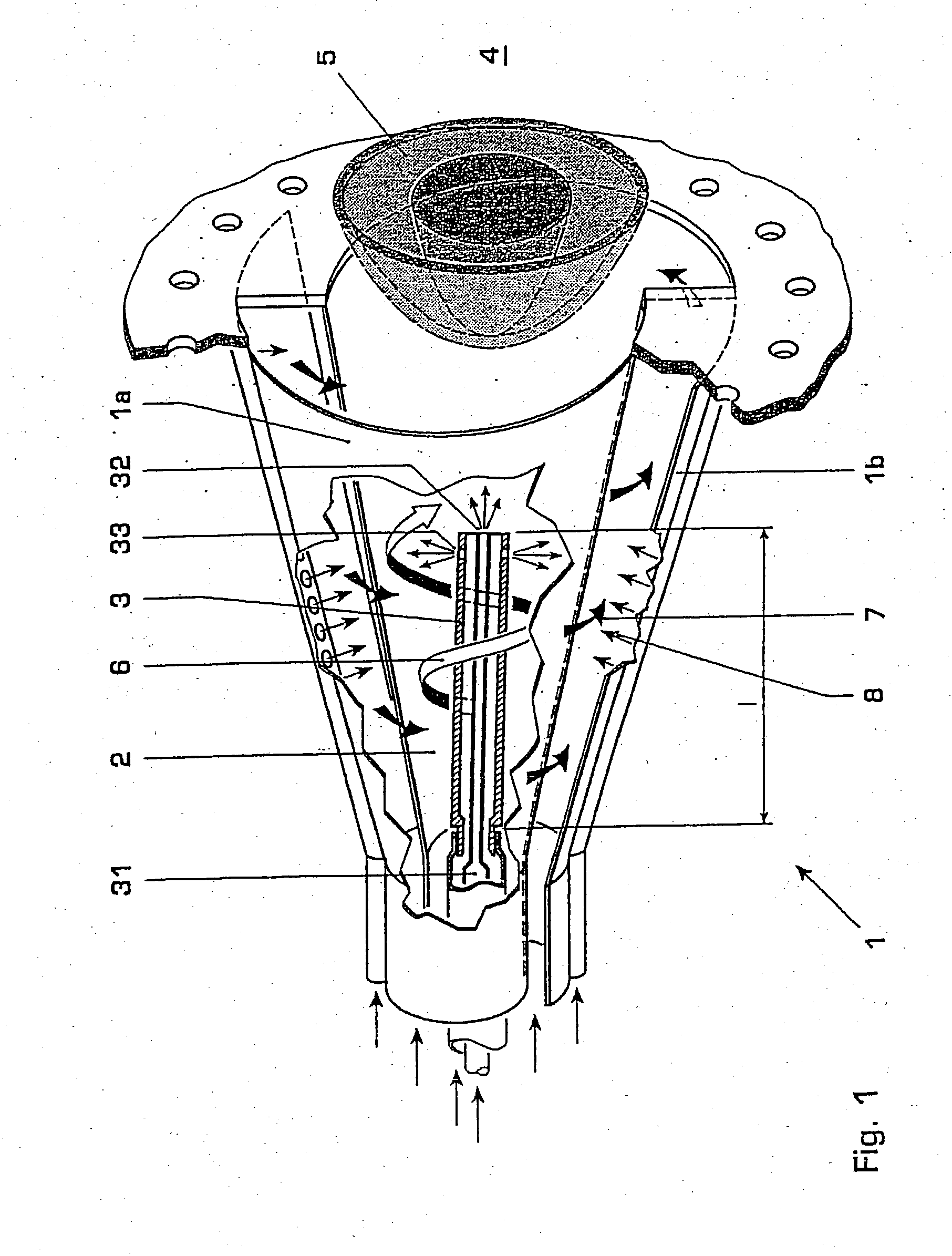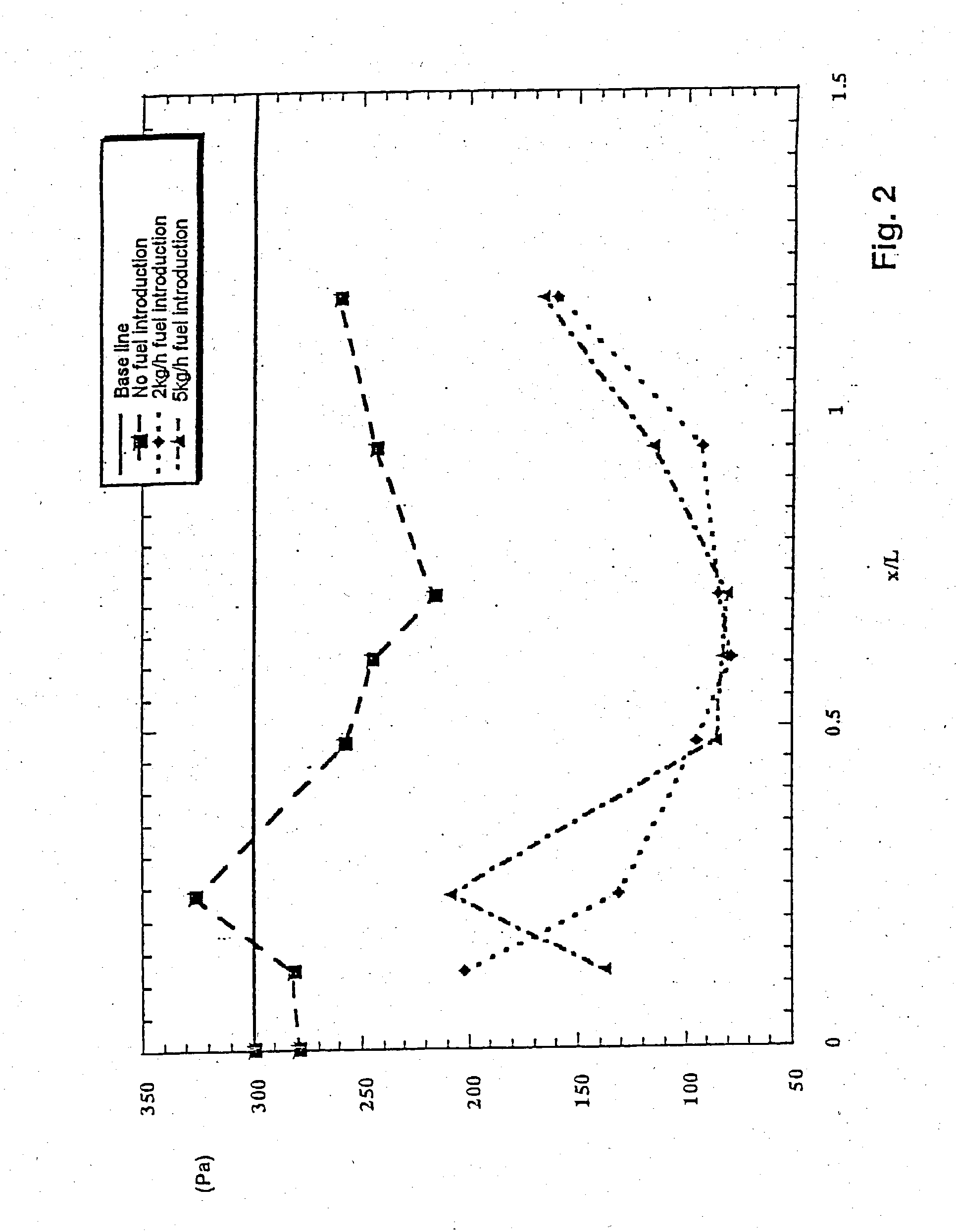Method for the reduction of combustion-driven oscillations in combustion systems and premixing burner for carrying out the method
- Summary
- Abstract
- Description
- Claims
- Application Information
AI Technical Summary
Benefits of technology
Problems solved by technology
Method used
Image
Examples
Embodiment Construction
[0016] The invention will be described below by way of example, without the general idea of the invention being restricted, by means of exemplary embodiments, with reference to the drawings in which:
[0017] FIG. 1 shows a diagrammatic longitudinal section through a conically designed burner with a lengthened burner lance,
[0018] FIG. 2 shows a graphical illustration of the dependence of the length of the burner lance on the acoustic damping behavior,
[0019] FIG. 3 shows a graphical illustration of the dependence of the length of the burner lance on the acoustic damping behavior in terms of different lance configurations,
[0020] FIG. 4 shows a graphical illustration of the dependence of the length of the burner lance on the NO.sub.x emissions in terms of different lance configurations,
[0021] FIG. 5-8 show different burner lance configurations.
[0022] FIG. 1 illustrates in longitudinal section a premixing burner 1, such as may be gathered in terms of its basic construction, for example, fr...
PUM
 Login to View More
Login to View More Abstract
Description
Claims
Application Information
 Login to View More
Login to View More - R&D
- Intellectual Property
- Life Sciences
- Materials
- Tech Scout
- Unparalleled Data Quality
- Higher Quality Content
- 60% Fewer Hallucinations
Browse by: Latest US Patents, China's latest patents, Technical Efficacy Thesaurus, Application Domain, Technology Topic, Popular Technical Reports.
© 2025 PatSnap. All rights reserved.Legal|Privacy policy|Modern Slavery Act Transparency Statement|Sitemap|About US| Contact US: help@patsnap.com



